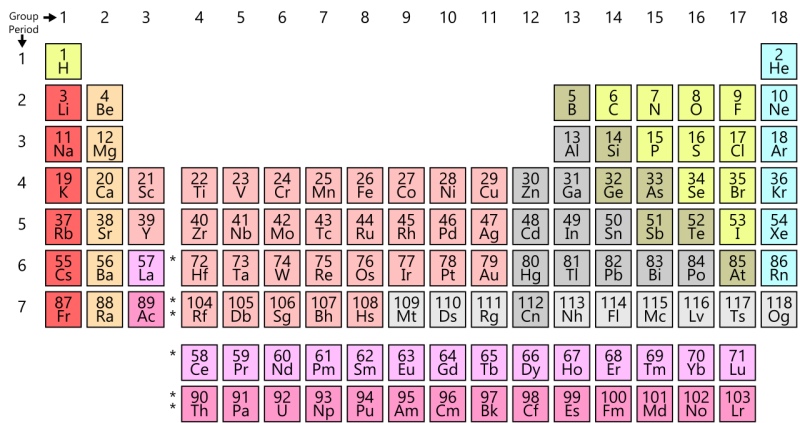
The Periodic Table turned 150 last month so we thought we’d take a look at how it came about. DAVID ADAMS reports…
The Periodic Table (more formally the Periodic Table of Chemical Elements) turned 150 last month but it’s a very different document than that first published by Russian chemist Dmitri Ivanovich Mendeleev in 1869.
Mendeleev’s periodic table contained just 63 elements – those known at the time – and it’s since grown to almost double that (you can see a chart showing the changes here). But where did the idea come from?

The Periodic Table as it is today. PICTURE: Offnfopt/Wikipedia
Mendeleev was among attendees at a chemistry congress in 1860 held in Germany where Stanislao Cannizzaro presented a paper on the weights of the atoms in elements. Mendeleev built on Cannizzaro’s work – as well as that of others including Amedeo Avogadro and Johann Wolfgang Dobereiner – to create a table of the 63 known elements.
Some years later Mendeleev was teaching chemistry – he went on to become a professor at the University of St Petersburg – and, unimpressed by the existing textbooks on the subject, decided to write his own. That meant he had to find some system of organising the elements.
The result saw him arrange the elements in vertical columns in order of increasing atomic weight and then grouping elements with similar chemical characteristics into horizontal rows. His system even left gaps for undiscovered elements – gallium, scandium and germanium were discovered in the following years – but it wasn’t without shortcomings. Mendeleev was unable to locate hydrogen within the system, for example.
Mendeleev presented his table to the Russian Chemical Society on 6th March, 1869. In 1892, he was awarded the Davy Medal by the Royal Society of London for his efforts (along with another attendee of the meeting in Germany, J Lothar Meyer). He even had an element named after him – mendelevium Md, 101 on the table).
Elements continue to be added to the table – the most recent are Nihonium (number 113), Moscovium (115), Tennessine (117) and Nihonium (118).
In acknowledgement of the important contribution the Periodic Table has made, the UN declared this year the International Year of the Periodic Table of Chemical Elements.






